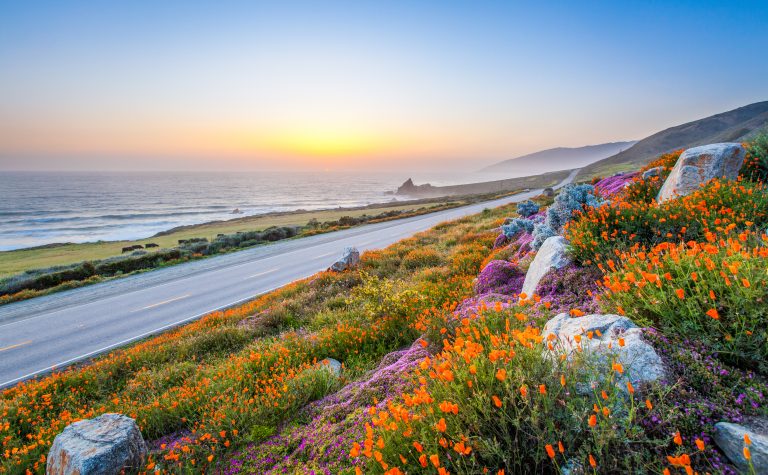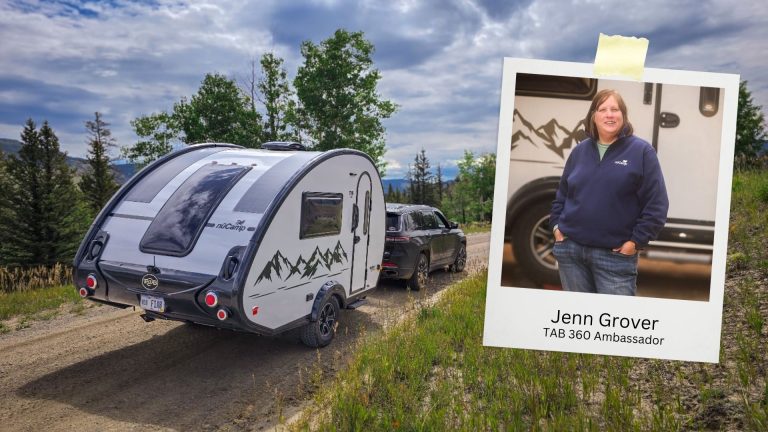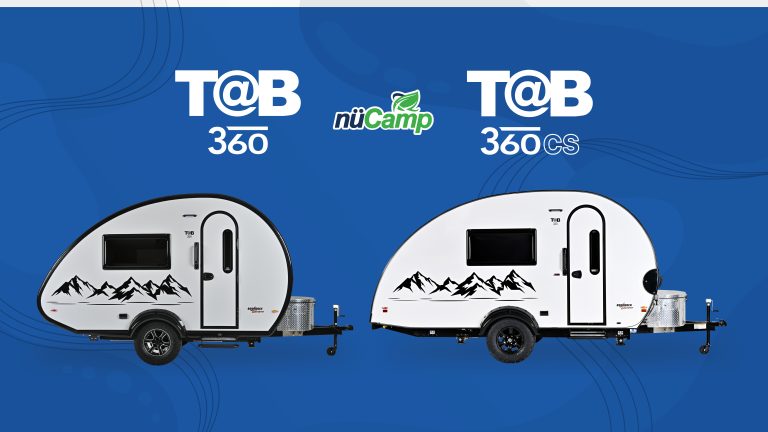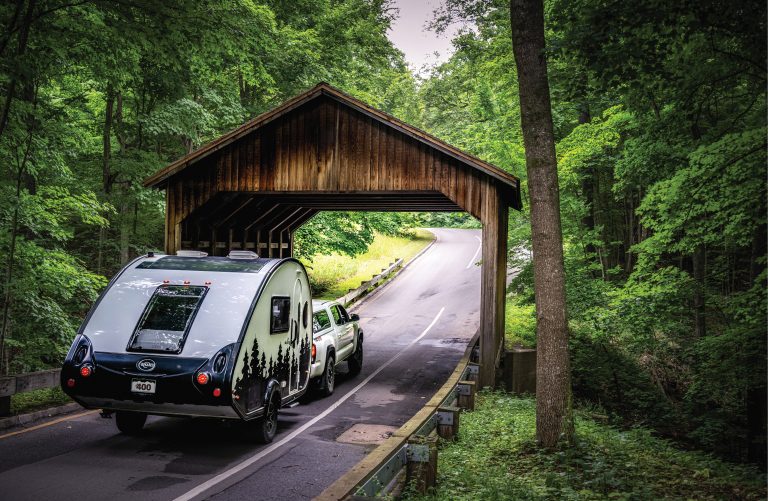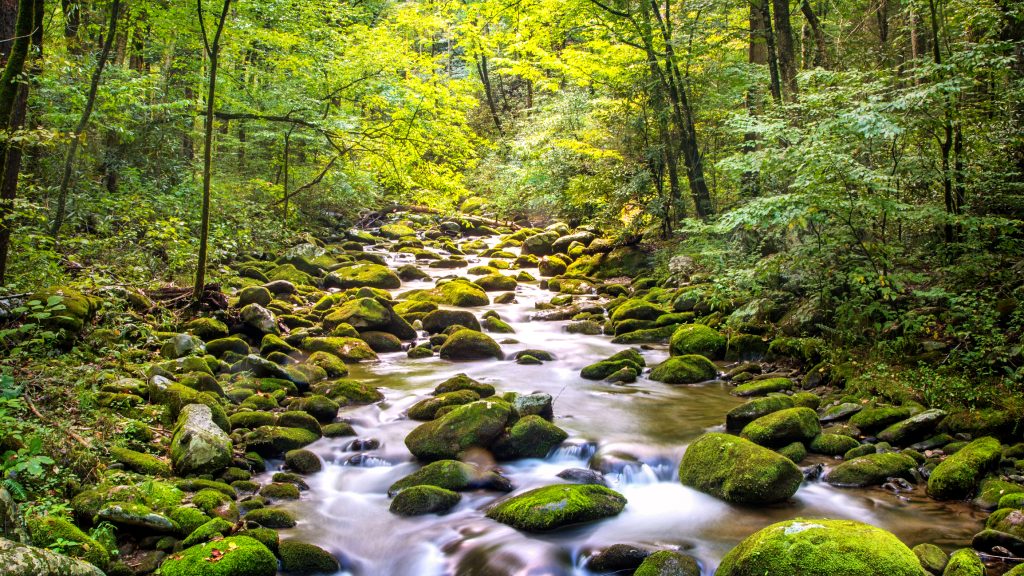Did you know the Great Smoky Mountains National Park is among the most diverse parks in the nation? Nearly 400 species and 1,600 plants call it home. It’s also an incredible destination to enjoy beautiful hikes, stunning waterfalls, and awe-inspiring mountain views. Straddling the state lines of Tennessee and North Carolina, there are more than 500,000 acres to explore within the Appalachian Mountains.
You may also be surprised to know the Smokies is the most visited national park in the U.S. Annual visitations have surpassed 10 million in recent years, placing it above Grand Canyon (4.6 million visits), Yosemite (3.8 million), and Yellowstone (3.2 million).

Because it is such a popular national park, it’s no wonder this location was selected as one of the nuCamp Rallies with Mandy and Kendrick. nuCamp’s TAB 400 ambassadors host the rally in Townsend, Tennesee — just outside of the park. This rally sold out quickly and will be held this April. If you’re interested in joining us at the 2023 Smoky Mountain TAB Rally, sign up to receive newsletters with rally information.
Even if you can’t attend the Smoky Mountain TAB Rally, we encourage you to explore the beauty of the Smoky Mountains anytime. To help you make the most of your trip, we put together a list of outdoor activities that are perfect for exploring the splendor of the Smoky Mountains.
Preparing for your visit
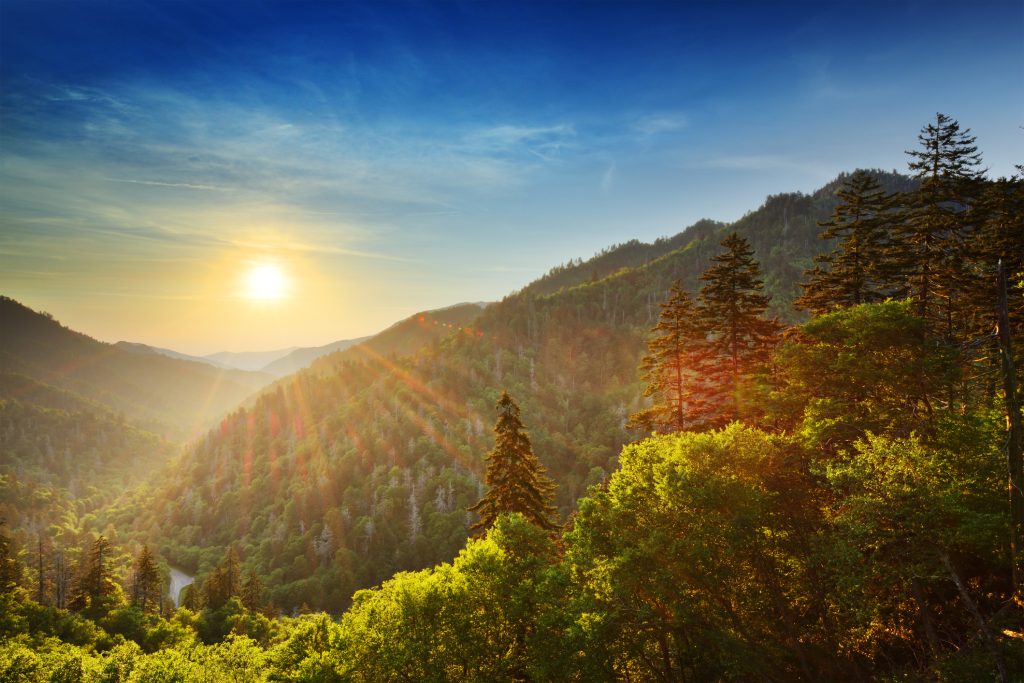
Like with any trip, you must be prepared by researching the area ahead of time, especially its weather patterns. For the Smokies, that means understanding the difference elevation can make in terms of temperature. According to the website, there can be a difference of 10-20 degrees Fahrenheit from mountain base to top, and while there may be sunshine and clear skies at ground level, the same may not be true at higher elevations.
From March to May, unpredictable weather is the norm, with changes occurring rapidly and without much warning. From June through August, visitors will find heat, haze, and humidity — although higher elevations tend to offer much more pleasant temperatures. Cooler weather and the fall color season are the hallmarks of September through mid-November, followed by generally moderate weather from mid-November through February, although weather extremes do occur.
Knowing what to expect and being prepared with the proper clothing and equipment can make the difference between a pleasurable trip and a challenging trip, especially if your plans involve enjoying the great outdoors.
Outdoor Activities
No matter what time of year you decide to visit, there is no shortage of seasonal activities for people to enjoy.
Hiking. The Park has 850 miles of hiking trails, including 70 miles of the Appalachian Trail. The Park website provides Trail Accessibility Information, with specific trails measured with a High-Efficiency Trail Assessment Process (HETAP) to collect objective trail information. This information, combined with maps, and photos, allows you to choose the ones that are most suitable for your skill and ability. The Park recommends that hikers allow plenty of time to complete their hikes before dark, using a typical speed of 1.5 miles per hour as a measurement.
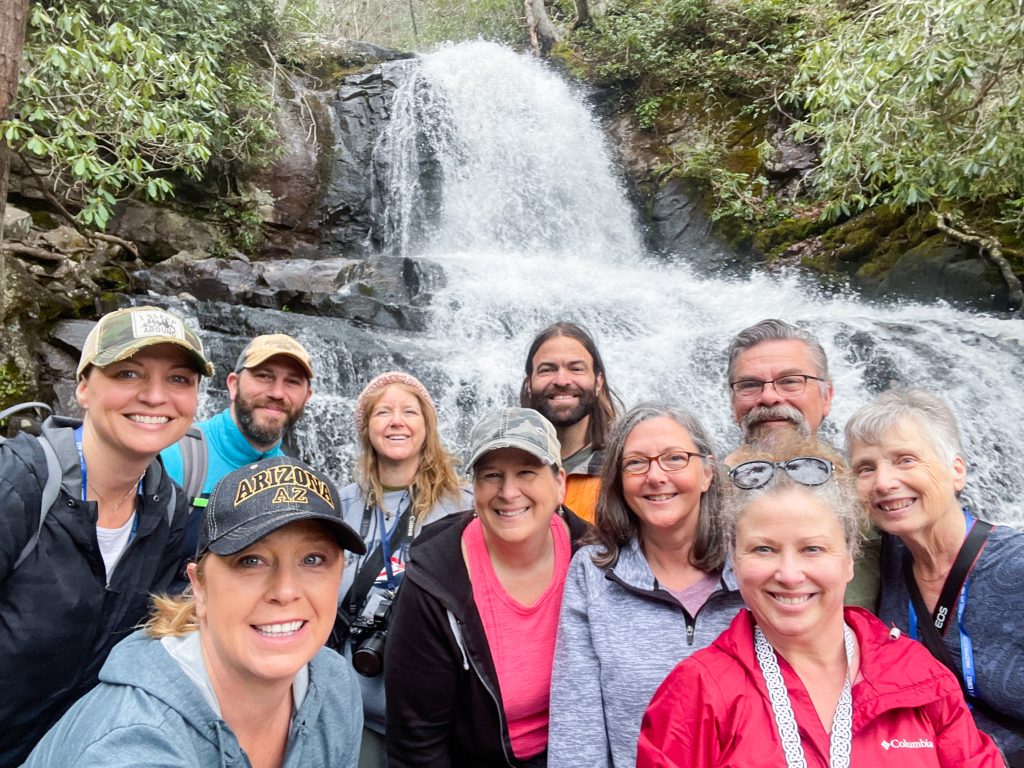

Wildlife Viewing. While the Park is home to a diverse wildlife population, the dense forest tends to provide them with cover, making them difficult to spot. You don’t want to scare off the wildlife, so you’ll have the most luck viewing wildlife if you sit quietly. Doing this in the morning or evening is best. Be sure to stay 150 feet from bears or elk and refrain from feeding, touching, teasing, frightening, or intentionally disturbing wildlife — not just for your own safety but also because doing so violates the laws protecting park wildlife (contained in the Code of Federal Regulations).
Waterfalls. With its ample rainfall and elevation gradient, it’s no surprise that the Park has many beautiful waterfalls, including three that can be reached by car: Meigs Falls, The Sinks, and Place of a Thousand Drips. The Waterfalls in the Great Smoky Mountains National Park video offer an overview of some of the Park’s favorite waterfalls, while this page shows where the waterfalls are located within the Park.
Horseback Riding, Hayrides, and Carriage and Wagon Rides. Onsite concession horseback riding stables offer guided horseback rides, hayrides, and carriage and wagon rides. There are also 550 miles of the Park’s hiking trails that are open to horses (for those who bring their own horses to the Park). Five drive-in horse camps — Cades Cove, Big Creek, Cataloochee, Round Bottom, and Towstring — are open from April through October, providing ready access to backcountry horse trails in the park.
Biking. While cyclists can travel on most roads within the park, the steep terrain, narrow road surfaces, and heavy automobile traffic can make the experience less safe or enjoyable, with the exception of the 11-mile one-way Cades Cove Loop Road. The State of Tennessee requires children age 16 and under to wear helmets. Bicycles are allowed on the Gatlinburg Trail, the Oconaluftee River Trail, and the lower Deep Creek Trail but are prohibited on all other park trails.
Auto touring. There are 384 miles of road within the Park — most of which are paved with the few gravel ones maintained in suitable condition for passenger cars. A tour of the park by vehicle provides a variety of experiences: panoramic views, tumbling mountain streams, weathered historic buildings, and mature hardwood forests.
Some of the more popular ones are Cades Cove Loop Road, Newfound Gap Road, Roaring Fork Motor Nature Trail, and Foothills Parkway. Be sure to visit Clingmans Dome, the highest peak in the park offering spectacular 360° views of the Smokies and beyond, which is accessible via Clingmans Dome Road off Newfound Gap Road.
Campsites
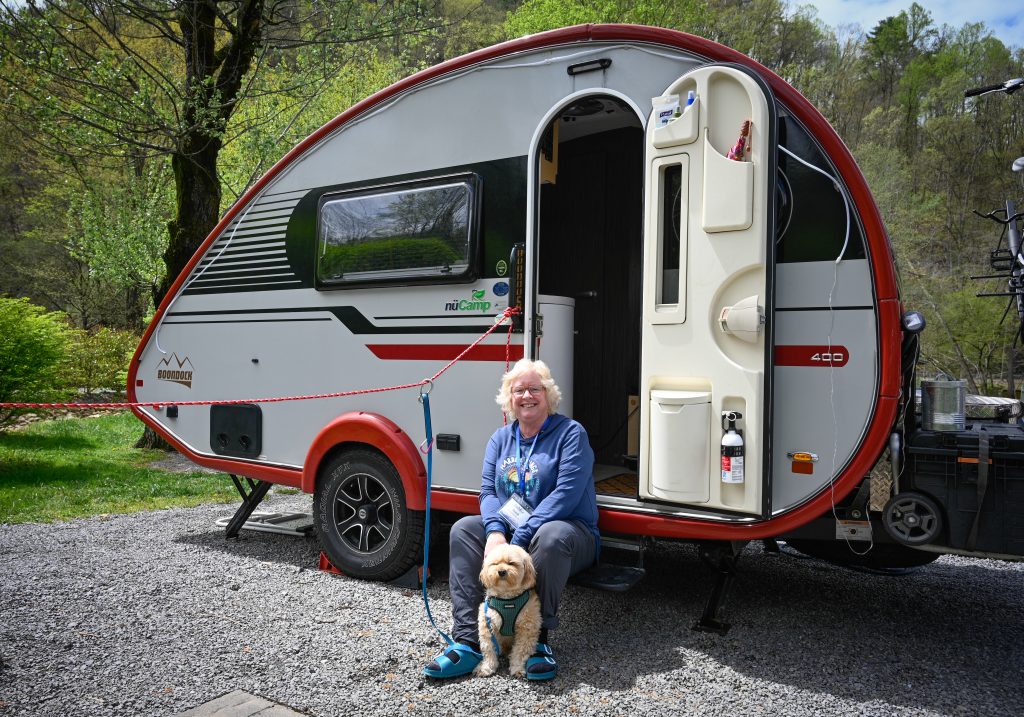
If you’re attending the Smoky Mountain TAB Rally, you’ll be staying at the beautiful Little Arrow Outdoor Resort. If you’re visiting another time, you may be interested in spending a few nights at the Park to fully enjoy everything the Smokies has to offer.
The Great Smoky Mountains has four types of campsites: Backcountry, Frontcountry, Group Campgrounds and Horse Camps, for a total of 10 developed campgrounds, plus more than 100 backcountry sites, including shelters. Facilities and the procedures for obtaining a site are different for each campground. Campers must bring in only heat-treated firewood that is bundled and certified by the United States Department of Agriculture (USDA) or a state department of agriculture.
Picnic areas are located at Cades Cove, Deep Creek, Greenbrier, Metcalf Bottoms, Big Creek, Chimneys, Collins Creek, Cosby, Heintooga, Look Rock, and Twin Creeks, although only the first four are open year-round.
Parking Fees. While Great Smoky Mountains National Park doesn’t charge an entrance fee, effective March 2023 parking tags will be required for all vehicles parking for longer than 15 minutes. These fees are an essential source of revenue for the Park, allowing it to maintain services as visitation increases.
Plan and document your trip with uCamp:the App
Have we convinced you to visit this breathtaking National Park? If you’re looking to plan your adventure, download uCamp:the App. Our planning feature makes it easy to map your destinations and add notes to each stop. Once you’re there, use the journal tab to take photos and write your adventure story. The app makes it easy to share your travels with friends and family.
Recent Articles
